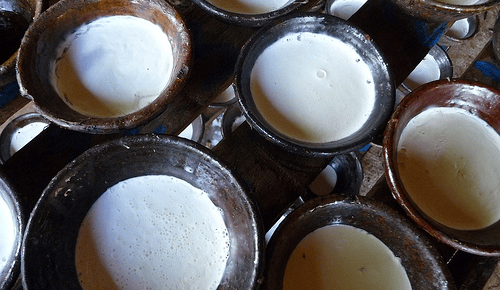Current efforts to conserve forests, biodiversity and traditional land-use systems require an improved understanding of both the projected climatic changes and the responses of biodiversity and traditional agricultural systems to changing conditions.
In a new study recently published on Biological Conservation, a team of scientists (among them, CMCC researcher A. Trabucco from IAFENT Division) used an analysis and multi-model approach to project the impact of climate change on spatial distribution of bioclimatic zones and ecosystems within the biodiverse rich Xishuangbanna Prefecture, Yunnan Province, China, by the year 2050.
Four bioclimatic zones and nine strata were identified, overlaid with protected areas, and associated with on-going land-use change, i.e. a rapid increase in rubber plantation from 8% to 22% of total area between 2002 and 2010.
The analysis provides the basis for understanding potential impacts of changing bioclimatic conditions on managed and unmanaged ecosystems and land-use change trends, within the context of ongoing rapid change and agricultural expansion in the area.
Climatic change potentially removes the bioclimatic barriers to further expansion of rubber plantations within the area and increases pressure on remaining biodiversity both within and outside of protected areas.
The abstract of the paper:
An analysis and multi-model approach, based on a statistically derived Global Environmental Stratification (GEnS) and using a downscaled ensemble (n = 63) of CIMP5 Earth System Models applied across four representative concentration pathways (RCP), has been used to project the impact of climate change on spatial distribution of bioclimatic zones and ecosystems within the biodiverse rich Xishuangbanna Prefecture, Yunnan Province, by the year 2050. Four bioclimatic zones and 9 strata were identified, overlaid with protected areas, and associated with on-going land-use change, i.e. a rapid increase in rubber plantation from 8% to 22% of total area between 2002 and 2010. Significant changes in the areal extent and distribution of all zones and strata are projected, with an averaged mean annual temperature increase ranging from 1.6 °C to 2.4 °C. By 2050, there are significant geographical shifts in all identified strata, with an average upward shift of 309 m of elevation for all strata. On average, more than 75% of Xishuangbanna is predicted to shift to a different zone, with 96% shifting to a different stratum. The area conducive to rubber plantations, currently limited by climatic conditions, expands to nearly 75% of the total area. Climatic change potentially removes the bioclimatic barriers to further expansion of rubber plantations within the area and increases pressure on remaining biodiversity both within and outside of protected areas. The analysis provides the basis for understanding potential impacts of changing bioclimatic conditions on managed and unmanaged ecosystems and land-use change trends, within the context of ongoing rapid change and agricultural expansion in the area. Current efforts to conserve forests, biodiversity and traditional land-use systems require an improved understanding of both the projected climatic changes and the responses of biodiversity and traditional agricultural systems to changing conditions.
Read the integral version of the paper:
Zomer R. J., Trabucco A., Wang M., Lang R., Chen H., Metzger M. J., Smajgl A., Beckschäfer P., Xu J.
Environmental stratification to model climate change impacts on biodiversity and rubber production in Xishuangbanna, Yunnan, China
2014, Biological Conservation, Volume 170, Pages 264–273, DOI: 10.1016/j.biocon.2013.11.02




